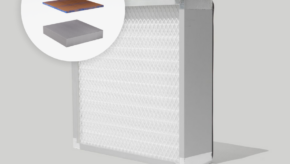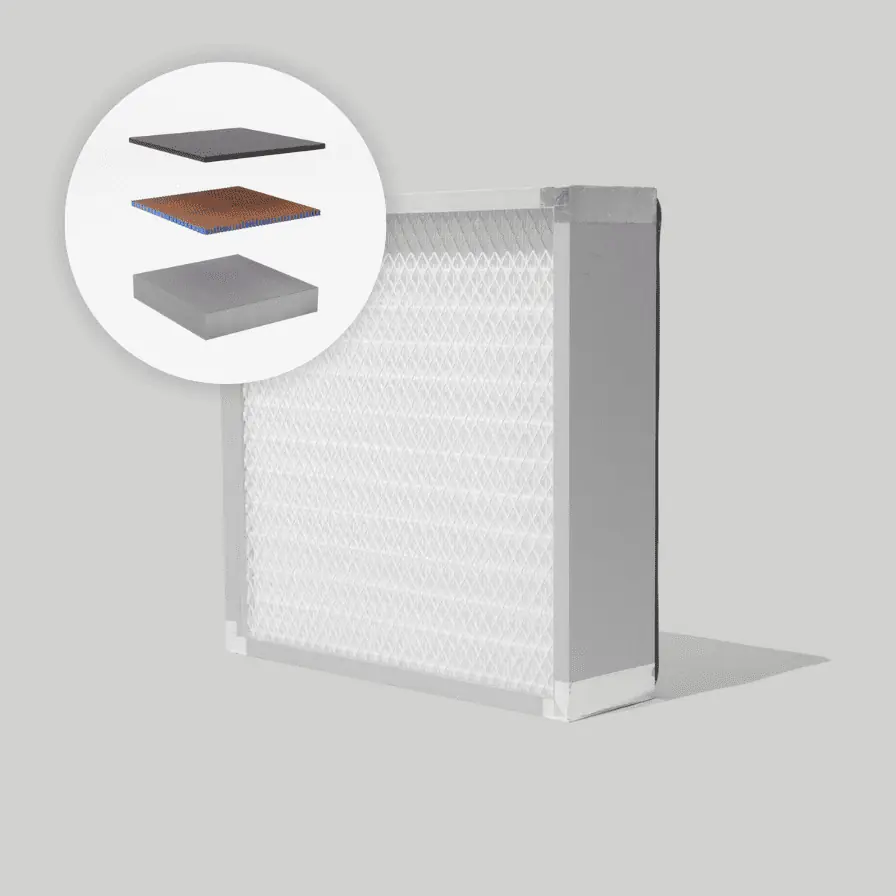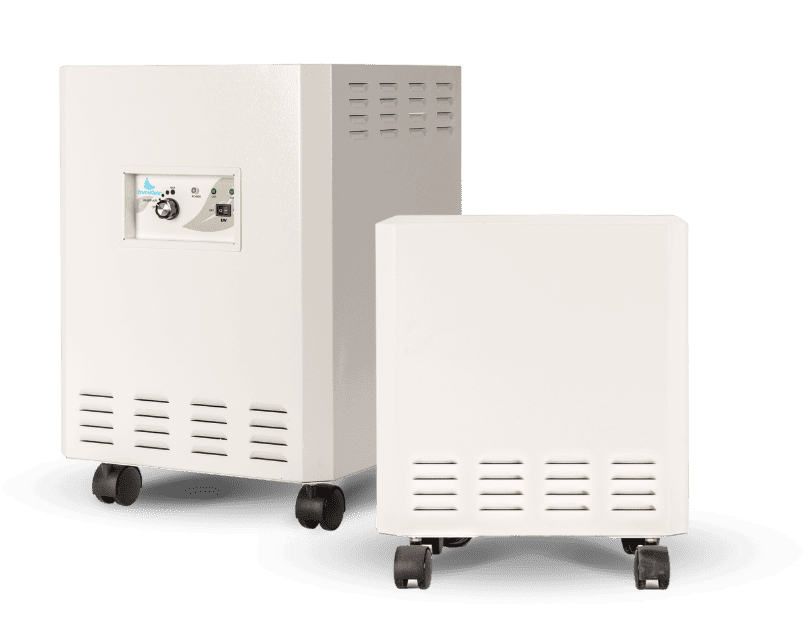The indoor air of a home can be comprised of a wide range of particles floating in the air, some can come from within your home, while others can enter the home through outside sources that will contribute to airborne contamination within your personal indoor air. Pollution that can be found indoors may include chemical compounds (VOCs), odors, allergens, carbon emissions, and even fine particles and particulate matter that can float in the air and be significantly hazardous to human health upon exposure. And the different combination of these airborne pollutants in the air can taint the indoor air quality depending on a variety of factors – like what pollutants are in the air, the levels of these pollutants, and how small these pollutants are in the air.
Particles found within the air of your home can be made of all different shapes and sizes, and the size of these airborne pollutants can greatly impact air quality and human health adversely. Smaller particles and particulate matter that make their way into the airspace of your home can easily become ingested or inhaled into the human body, and thus will make its way into the lungs and potentially into the bloodstream, this can be very hazardous to health.
In this article we are going to discuss the various ranges of particle sizes of airborne pollutants, the different types of particulate matter found in your home, and the best solution to reducing particulate matter in the indoor air.
What is Airborne Particulate Matter?
Airborne particulate matter, also known as PM2.5 are particles that are composed of solid particles and liquid droplets found in the air, this can be anything from dust, dirt, soot, smoke, etc. These airborne particles can be so small, that they are not visible to the naked eye, and some are so small that they can only be detected using an electron microscope, according to the Environmental Protection Agency (EPA). Particulate matter pollution can vary in size, from PM10 to PM2.5, each of these different sized airborne particulate matters will impact the indoor air and health differently.
PM10 are smaller inhalable particles that contain a diameter that is usually about 10 micrometers and smaller. Although this type of particulate matter can be dangerous to human health when present in the indoor air space, smaller particulate matter such as PM2.5 may be far worse for indoor air quality and human health. PM2.5 are fine, easily inhalable particles that contain a diameter of 2.5 micrometers or smaller. The size of this type of airborne pollutant is so microscopic that it is usually compared to that of a single strand of hair from someone’s head, which is about 70 micrometers in diameter. This illustrates that PM2.5 is about 30 times smaller than a strand of hair – a very small airborne particulate matter traveling in the indoor air space.
Particles vs Particulates
The difference between the two terms particles vs particulates may be hard to determine, as the terms are interchangeably used when discussing indoor air quality and pollution that can contaminate this air. Particulate matter (particulates) are also called particle pollution that will spread throughout an enclosed air space and taint the quality of the air within this environment. Particles and particulate matter are both used to describe this airborne particulate matter in the air that is responsible for the impact on indoor air quality and are the pollutants in the air that can adversely affect human health upon exposure.
Particle Size Measurement
When it comes to measuring particles in the air of your home, it can be difficult to make this classification, as each particulate matter will vary in size and diameter. The measurement system that is used to measure these airborne particles is referred to as micrometers or microns – and particulate matter in the air can range in size to up to 100 micrometers in diameter in the home’s air. Airborne particulate matter inside an environment can vary, as well as contain many different types of particulate matter within this airspace such as dust, dander, allergens, mold spores, bacteria, viruses, chemical compounds, etc. Depending on the exact particulate matter, the sizing of these particles will range in micrometers.
Micron vs Micrometer
It can be confusing when you hear the different names of measurements for particles in the air, such as micron vs micrometer. However, when it comes to the correct form of measurement for these pollutants in the air, micrometer is also known as microns which is the unit of measurement for particulate matter. According to AskDifference, “Microns are an SI derived unit of length equaling 1×10-6 metre; that is one millionth of a metre”. Whereas a micrometer is sometimes known as a device that are used in telescopes or microscopes to measure the diameter of particulate matter.
Types of Particulate Matter PM2.5
There are many different forms and types of particulate matter PM2.5 that can be formed in the air and found circulating within the airspace of your indoor environment. The different types of particulate matter in the air will depend on the environment’s conditions and different factors inside of this indoor space such as pets, smokers, mold growth, and even allergens like dust that develop within the enclosed space.
Particulate matter, as we discussed earlier, will range in size and shapes when present in your air. Therefore, it may only be possible to get a gage of the size of these different types of particulate matter in your air such as dust, mold spore, and smoke particle size in the air. Below are going to break down the different particle sizes of these common airborne indoor particulate matter in the air of your home.
Dust Particle Size
One of the most common types of particulate matter found in the air of an indoor environment is the particle dust. Where does dust come from? Dust is made up of fine particles of solid matter that come from various sources such as soil, dirt, pollen, human and animal hair, textile fibers, human skin cells, etc. The size of these particles of dust in your home’s air can vary in size but ultimately it will run between 1 to 400 microns in size. The dust particles that are larger than 100 microns will settle down near the source of the dust creation in the environment.
According to Science Direct, dust particles can be divided into three classes based on their overall size, “ Dust particles can be larger than 20 microns, between 20 microns to 1 micron, and less than 1 micron in size”. However, the typical size of dust that you will find in your home will be about 10 microns in diameter.
Mold Spore Size
Mold spores are a form of particulate matter that can be found in indoor environments that have a growing presence of mold in the space. Mold will form and grow in a home where ideal conditions are present such as moisture, darkness, oxygen, humidity, etc. When these conditions are present the mold will form and once this mold develops it will begin its release of mold spores into the airspace. Mold spores are microscopic spores that will float throughout the airspace and can potentially become ingested or inhaled into the human body upon exposure. These mold spore size ranges from 1 micron to 20 microns in size.
Smoke Particle Size
For homeowners who are smokers or that live with smokers, smoke particles may be a big issue in the indoor space of this environment. Cigarette smoke particles are released into the air from the smoke of this tobacco product, and it releases a combination of particulates and chemicals into the air space. The smoke particle size found in this type of smoke are a smaller airborne particulate matter found throughout the indoor air, with the size range between 0.3 to 0.5 microns in diameter. This fine particulate matter is not visible to the human eye and will be found floating in the air which can potentially lead to inhalation or ingestion of this particulate matter into the deepest recesses of the lungs.
Smoke can also be produced from other sources in a home such as fireplaces, cooking, marijuana smoke, and even forest fire smoke that can all enter into the air space of your home.
PM2.5 Detector & Monitor
As particulate matter begins to accumulate and buildup within the indoor space of your home, it may be difficult to determine and access the levels of this pollutant in your air – as well as track the indoor air for other pollutants such as chemical VOCs, carbon dioxide emissions, allergens, and temperature/humidity in the environment. There are several methods that can be used to determine if elevated levels of particulate matter in your personal indoor environment. One may be certain health symptoms that may be aggravated when indoor exposure occurs, an unsure method that is not based on any scientific data. Whereas a PM2.5 detector and monitoring device can also be used inside of the home to estimate the precise levels of particulate matter in the air using scientific methods.
How to Reduce Particulate Matter Indoors
Indoor particulate matter is undoubtedly a significant component to the air of your home, as there are many different sources inside this area that can produce particulate matters into the air space. When these particles begin to buildup in the air it can lead to both the tainting of your indoor air quality and even negative effects on the health of those exposed to these particles in their air – especially small particles in the air that can enter into the human body. Particulate matter can trigger different symptoms such as eye, nose, and throat irritation, aggravation of respiratory system, and other health effects depending on the levels of particulate matter in the air.
When it comes to reducing the particulate matter levels indoors, there are several different solutions to implement into your indoor environment. Placing and using air quality products in this space can be significantly beneficial in removing particles from the air – such as using high quality air filters or even an air purifier to help filter out these particulate matters from the indoor air.
HEPA Air Filtration System
The use of a HEPA air filter for air filtration in an air purifier can be just what you need to thoroughly eradicate and remove particulate matter and fine particulate matter from the air. A HEPA filter is a special type of filter that is used in both HVAC systems and in air purifiers to remove smaller particles from the air, as this filter can collect and filter particulate matter larger than 0.3 microns in size, and this filters out at a 99.99 percent efficiency. This will provide you the capability to capture dust, pollen, mold, pet dander, and other smaller particulate matter from the air effectively.
The EnviroKlenz Air Purifier is a revolutionary air purification system and technology that is designed to filter and eliminate a broad spectrum of pollutants from the indoor air. EnviroKlenz’s proprietary earth mineral technology works through ‘adsorptive neutralization’ where the pollutants such as chemical compounds and noxious odors are effectively contained and neutralized upon contact with the earth mineral technology. This is accomplished without the use of any masking agents or chemical byproducts within this technology. Additionally, this air purifier contains a second stage of filtration using a hospital-grade HEPA filter. This type of filter, as we discussed above, is able to effectively collect and remove fine particulate matter larger than 0.3 microns in size at a 99.99 percent efficiency – this will remove those pesky airborne particulate matters from your indoor air space.
Article Sources:









